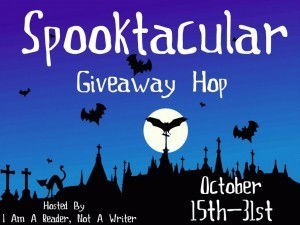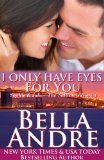Hannah Fielding's Blog, page 120
October 15, 2013
Les Voiles de St Tropez: A day out at the St Tropez Regatta
Where I live in the south of France, my nearest major town is St Tropez. No doubt you’ve heard of it. Once, it was little more than a quaint fishing village, but after World War Two, it became an internationally famous seaside resort on the coast that came to be known as the French Riviera. First, because of an influx of French actors and actresses and musicians. Then, once Brigitte Bardot put it on the map in the 1950s with her film And God Created Woman, because European and American jet-setters dubbed it the place to be for sun, sea, sand and celebrity spotting. Today, the attractions remain the same, but one event in particular draws the crowds: Les Voiles de St Tropez (the St Tropez Regatta), which is held at the end of September every year.
Les Voiles de St Tropez is one of my favourite days in the French calendar, and my husband and I do our best to arrange our schedules so that we are both in France at this time of year. Because the roads become clogged with traffic, we have got into the habit of taking the bateau vert from Ste Maxime, which is a small ferry that crosses the bay every 20 minutes, going to and from between Ste Maxime and St Tropez. The journey takes 15 minutes, and the views out to sea and of the coastline are spectacular.
But it is the views of the Regatta that we are travelling to see – and what a sight! (See the photos below.) Dancing sails like feathers floating in the breeze. Immense yachts, some of them up to 50 metres in lengths. Sleek, elegant ships built for speed, and smaller crafts at the outskirts happy to drift on the waves. And the colours – blue sky, blue sea and everywhere you look white sails that call to mind angels’ wings.
[[Show as slideshow]]
This year, my husband and I found a superb spot from which to enjoy the view: the Restaurant Lei Mouscardins. It’s a well-known restaurant in the area, and is the only one to have its own fishing boat, guaranteeing the very freshest of seafood. But food aside (and the food is wonderful), the views are to die for. The restaurant is set on the west side of Le Vieux Port and offers panoramic views of the Bay. Needless to say, we took our time over our meal, and took in the sights – it was much like being at the cinema, though with more delectable food by far than popcorn!
To get a feel for the Regatta, take a look at the following YouTube video. Already, I am looking forward to next year’s event – there is something so beautiful about the scene that I always return to home feeling buoyant and happy.
The untold story of ‘the other woman’
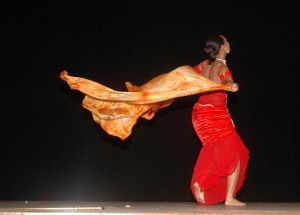 My novel, Burning Embers, tells the love story of Rafe, an entrepreneur, and Coral, a photographer, in the heat and passion of Kenya. It would be easy to assume that my favourite character in the book is my heroine, the feisty Coral, or the handsome alpha male hero, Rafe. But in fact, my heart is tugged towards a secondary character, Morgana, the dusky Middle Eastern dancer and Rafe’s mistress.
My novel, Burning Embers, tells the love story of Rafe, an entrepreneur, and Coral, a photographer, in the heat and passion of Kenya. It would be easy to assume that my favourite character in the book is my heroine, the feisty Coral, or the handsome alpha male hero, Rafe. But in fact, my heart is tugged towards a secondary character, Morgana, the dusky Middle Eastern dancer and Rafe’s mistress.
Here’s Morgana’s first appearance in the book:
With a sudden, dramatic rolling of drums, Morgana made her entrance.
At first, Coral had a vision of a shimmering comet that flashed across the stage. When she became accustomed to the woman’s costume of glittering spangles, she saw that Morgana possessed the warm, dusky beauty of the women of the Middle East. So diaphanous was her skin, it appeared as if a golden light illuminated the design of her features, which were molded to the perfection of an ancient cameo. Her great, dark eyes flashed provocatively, and her thick, raven hair hung loosely to her waist, forming a dramatic black cloak around her shoulders.
The opening rhythms of the orchestra seemed to turn Morgana from a statue of marble into a living virago. The strips of voile that constituted her skirt alternately flared out then rolled themselves around her legs at every turn and twist, showing off and enhancing each curve of her beautiful figure. She was like a goddess and must have been conscious of her terrifying beauty; Coral had no doubt that the woman’s movements ignited the senses of all the men in the audience.
Morgana had noticed Rafe. She slowly danced her way toward him, but her professionalism ensured that her movements betrayed no emotion. Her face alone burned with passion, and her eyes, steadily fixed upon the man she apparently loved, were afire.
Morgana is Coral’s competition in the book when it comes to Rafe’s heart, and it would have been easy to cast this ‘other woman’ as wholly unpleasant and unworthy of Rafe. But in fact, as I wrote Morgana I found myself growing steadily more sympathetic towards her and, ultimately, admiring her.
First and foremost, Morgana is a woman not afraid to be passionate, which is a quality I very much like in her. This passion becomes focused into fighting for ‘her man’ – she is like a lioness defending her cub, and she fights with all claws out. But Morgana is not a foolish woman by any means, and neither is she – like so many ‘other woman’ characters – without a strong sense of pride. And so, when she realises that Rafe has chosen Coral over her, and that he loves and needs Coral, she melts gracefully and respectfully away into the background. She loves Rafe enough to put his happiness before her own. She loves Rafe enough to let him go. She is, in the end, entirely selfless.
‘There are two sides to every story’ – so goes the popular idiom. Certainly, Morgana has a story to tell. But there was no room in Burning Embers to deviate into Morgana’s story, and to follow the path she takes after losing the man she loves. One day, I would love to find the time to write her story. A fiery, sensual dancer with a broken heart but a great deal of courage and decency – I think she would make a compelling protagonist, and I would like to see her find a man who will similarly ache for her and fight for her. What do you think?
October 14, 2013
Win a copy of my novel in the Spooktacular Giveaway Hop
I’m delighted to be participating in the wonderful I Am a Reader, Not a Writer’s 4th Annual Spooktacular Giveaway Hop.
I’m giving away one paperback copy of my novel, Burning Embers – smouldering romance to warm your cockles as autumn sets in. Entries are welcome internationally.
To win, simply comment on this post by the end of 31st October and tell me what you most look forward to about autumn. Please include an email address so I can get in touch with the winner.
To enter all the other wonderful giveaways in this hop, visit http://www.iamareader.com/2013/08/4th-annual-spooktacular-giveaway-hop-sign-ups.html. Good luck!
October 13, 2013
Pen and paper versus word processing: Which creates the best book?
 When I first started writing, I wasn’t even out of knee-high-socks, and there was no means of writing open to me but the traditional pen (or pencil) and paper. Even now, I can hear the scratch of the writing implement on paper and smell the fresh ink, and these sensory memories take me to a happy place.
When I first started writing, I wasn’t even out of knee-high-socks, and there was no means of writing open to me but the traditional pen (or pencil) and paper. Even now, I can hear the scratch of the writing implement on paper and smell the fresh ink, and these sensory memories take me to a happy place.
I recently visited an exhibition on books at the Bodleian Library, Oxford University. There I saw original, handwritten manuscripts by the likes of Tolkien and JK Rowling. And I found the sight really quite moving. There is something indisputably romantic about a story etched by its creator onto paper. It’s something of an art form in its own right. And I couldn’t help wondering at the sense of pride handwriting-authors feel when they finish a novel – not only have they finished a novel, but they’ve had the skill and discipline to write it all by hand.
By the time I was ready to begin writing novels, my little-girl socks were a thing of the past, and so, for me, was writing seriously straight onto paper. Plotting and planning, yes. Diarising. Jotting down ideas in the notebook I keep permanently to hand. But writing a 100,000-word-plus novel? In the modern era of computerisation, I knew it would make little sense for me to work laboriously on paper. And so I type in word-processing software on a laptop. Quick and efficient.
But sometimes, I wonder, is it lacking in authenticity, and in the ‘soul’ of the writers of history? How would my books transform if I took the time to write them by hand? Would the very act of handwriting increase my sense of romanticism as I write, infusing the writing further? Would slowing down and working hard to get each and every word correct first time (knowing that editing is so much harder in a written manuscript) be beneficial to my craft? Or would, in fact, the reduction of speed and the introduction of close scrutiny for each and every word lead to less creative, less free writing? The first draft would be, I know, a thing of beauty, to be bound and treasured in a way one can never achieve with a Microsoft Word document. But would the result merit the extra effort, the deliberate move away from modernity?
In one sense, you could equate writing to baking. When you make a cake, you want a delicious, comforting end result that sparks nostalgia in you for the cakes of your childhood. You have a choice:
Buy the ingredients and make the cake entirely by hand, as your grandmother would have done. Weigh each ingredient. Combine them carefully using a spoon or hand-whisk. Knead by hand on a floured board. Get good and sticky and floury, and make your hands warm with effort.
Buy a cake mix, or use a food processor. Both options make baking easier. First, the cake mix. So simple! (Have you ever wondered why all cake mixes require you to add a fresh egg? In fact, manufacturers are perfectly capable of making a mix that includes egg, and requires only water added to rehydrate. But they stopped offering this option back in the 1960s, because the ‘water-only’ mixes didn’t sell well enough – home-bakers felt guilty that ‘baking’ was that easy!) Then, the food processor. Why do any work, or get messy at all, when you can just add ingredients to a machine that will do all the mixing and kneading for you?
I’m not suggesting, of course, that computers make writing a book as simple as adding water and egg to a cake mix or throwing some flour, sugar, butter and eggs into a machine. But they undoubtedly make writing easier. Spellcheck? Inbuilt dictionary and thesaurus? Automatic formatting? Find and replace? Cut and paste? Quick deletions? Quick additions? The question is, do we wholeheartedly embrace the ease that modern technology offers us, or should we be a little more open to the ‘good old way’ of writing?
The answer, I suspect, differs for different writers. But perhaps for all of us, there’s something to be said for middle ground – for writing the odd chapter by hand, with a beautiful pen, in a beautiful notebook, in a beautiful setting, and testing how it changes the writing experience and – crucially – the words that form on the page.
October 11, 2013
Book review: I Only Have Eyes for You by Bella Andre
From the blurb:
The sweetest temptation…
Sophie Sullivan fell head over heels for Jake McCann at the age of five. Twenty years later, the notorious bad boy still sees her as the “nice” Sullivan twin. When they both get caught up in the magic of the first Sullivan wedding, she knows it’s time to make him see her for who she truly is…the woman who will love him forever.
Jake has always been a magnet for women, but the only woman he really wants is the one he can never have. Not only is Sophie his best friend’s off-limits sister…he can’t risk letting her get close enough to discover his deeply hidden secret.
But when Sophie appears on his doorstep, Jake’s every fantasy comes to life, and he doesn’t have a hope of taking his eyes, or hands, off her. Jake knows loving Sophie isn’t the right thing to do, but one look at her and he knows he can’t possibly resist.
A great, passionate, easy read.
The story begins with Jake and Sophie at a wedding, where at last Sophie catches Jake’s eye thanks to a bold makeover and a less-than-subtle come-on. Poor Jake – how can he resist, especially given the fact he’s been in love with Sophie for a lifetime?
From there, romance blossoms – and then is blocked by a seemingly insurmountable obstacle. Which leads to a surprising twist. Which leads, ultimately, to a wonderfully satisfying ‘happy family’ ending.
I love the characterisation of Sophie as a librarian – which doesn’t have to mean remotely that she isn’t a sensual and inventive woman:
Sophie was neither a virgin nor a prude, despite what people might otherwise assume of librarians. On the contrary, if people knew just how well-read she was on the subject of sex, they would likely be shocked. Especially Jake. Wouldn’t it be something to shock Jude who clearly thought he’d written the book on seduction?
This is one of those books you can read in one, or perhaps two, sittings, because the story moves along at pace and isn’t too weighty. But that’s not to say it’s a story without depth, or passion – such passion!
An ideal book for passing a pleasant afternoon curled up on the sofa, or to read over a steaming hot drink in a cosy café.
I Only Have Eyes for You is available now from Amazon; click on the book cover below to visit the store.
October 10, 2013
The green green grass of home…
October 9, 2013
Another Romeo and Juliet movie? Swoon or sigh?
A new British film adaption of Romeo and Juliet opens in cinemas in the UK and the US on 11 October:
Will you go to see it?
Are you swept away by the thought of a new interpretation of the romance (which does not stick to Shakespeare’s dialogue)? Are you excited to see the chemistry between two young actors, Douglas John Booth and Hailee Steinfeld? Do the costumes and the setting (Renaissance Verona) appeal?
Or, alternatively, are you wondering what more director Carlo Carlei can bring to the story; what novel and powerful new edge he can find to move his audience? Are you an ardent fan of the Baz Luhrmann or Franco Zeffirelli version? Are you steering clear of the film for the same reason I’ve never watched Titanic more than once: because you find the ending unbearably tragic? You may, in fact, prefer works inspired by the plot and characters, rather than following them too closely. West Side Story, for example – or even the animated Gnomeo and Juliet!
Is Romeo and Juliet the ultimate love story? Ought we to re-imagine it each few years, or has it all been done before? Should we stay true to the Shakespearean original, or get creative and explore new interpretations and inspirations? Could anyone make a version in which the ending is not so tragic; and if so, would that even work? Whom would you cast as the perfect Romeo and Juliet?
I would love to hear your thoughts.
October 8, 2013
Recipe: Kenyan sponge cake (Mkate wa Mayai)
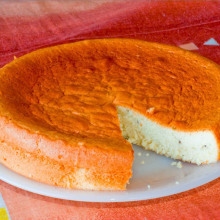 My novel Burning Embers is set in Kenya, and during my research for the book I sampled a range of Kenyan recipes to get a feel for what my characters would eat. Here’s a recipe for a sponge cake, traditional to Kenya, that became a firm favourite, because it’s deliciously light and so easy to make. It’s called Mkate wa Mayai, which sounds wonderfully exotic but actually means quite simply ‘bread made from eggs’.
My novel Burning Embers is set in Kenya, and during my research for the book I sampled a range of Kenyan recipes to get a feel for what my characters would eat. Here’s a recipe for a sponge cake, traditional to Kenya, that became a firm favourite, because it’s deliciously light and so easy to make. It’s called Mkate wa Mayai, which sounds wonderfully exotic but actually means quite simply ‘bread made from eggs’.
Ingredients
4 eggs
50 g caster sugar
5.5 tbsp flour
1/2 tsp cardamom powder (or cinnamon, if you prefer)
1/2 tsp baking powder
Pre-heat the oven to 180 C.
Grease and line an eight-inch cake tin.
Sift the flour and baking powder.
Beat the eggs.
Add the sugar and cardamom and beat until fluffy (volume doubles).
Add the flour gradually and fold in carefully.
Spoon the mixture into the tin.
Bake for around 20 minutes in a preheated oven at 180 degrees C until a cocktail stick inserted in the middle comes out clean.
Cool and then turn out.
Tip: The more you sift the flour, the lighter the cake will be. Do it over and over, and sift again when you add the flour to the mixture. And be very gentle folding it in!
Variation: I like to add raisins as well – a quarter of a cup sprinkled on top.
October 6, 2013
Darcy dead? Will you read the new Bridget Jones novel?
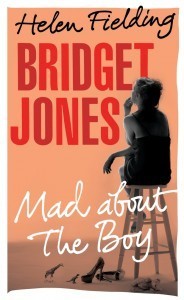 If publisher Random House was looking to ramp up publicity for Helen Fielding’s new Bridget Jones novel from sizeable interest to national outrage, it certainly met its objective. For the past few days, romance readers have been in uproar at the somewhat casual delivery, in the Sunday Times magazine, of truly devastating news about the novel.
If publisher Random House was looking to ramp up publicity for Helen Fielding’s new Bridget Jones novel from sizeable interest to national outrage, it certainly met its objective. For the past few days, romance readers have been in uproar at the somewhat casual delivery, in the Sunday Times magazine, of truly devastating news about the novel.
Anyone who’s read a Bridget Jones novel or watched the film would be forgiven for being really quite shocked. So may you be if you read the book’s blurb and thought it signalled clearly that this was light, witty, edgy romance like its predecessors:
Bridget Jones—one of the most beloved characters in modern literature (v.g.)—is back! In Helen Fielding’s wildly funny, hotly anticipated new novel, Bridget faces a few rather pressing questions:
What do you do when your girlfriend’s sixtieth birthday party is the same day as your boyfriend’s thirtieth? Is it better to die of Botox or die of loneliness because you’re so wrinkly? Is it wrong to lie about your age when online dating? Is it morally wrong to have a blow-dry when one of your children has head lice? Is it normal to be too vain to put on your reading glasses when checking your toy boy for head lice? Does the Dalai Lama actually tweet or is it his assistant? Is it normal to get fewer followers the more you tweet? Is technology now the fifth element? Or is that wood? If you put lip plumper on your hands do you get plump hands? Is sleeping with someone after two dates and six weeks of texting the same as getting married after two meetings and six months of letter writing in Jane Austen’s day?
Pondering these and other modern dilemmas, Bridget Jones stumbles through the challenges of loss, single motherhood, tweeting, texting, technology, and rediscovering her sexuality in—Warning! Bad, outdated phrase approaching!—middle age.
In a triumphant return after fourteen years of silence, Bridget Jones: Mad About the Boy is timely, tender, touching, page-turning, witty, wise, outrageous, and bloody hilarious.
Sounds like a jolly read, doesn’t it? Doesn’t sound like a book which is based on the foundation that Bridget’s happy-ever-after, so carefully built up to in books two and three, has apparently been decimated with the death of Mark Darcy.
My first thought, when I heard the news, was: ‘You can’t kill Mark Darcy!’ He’s a seminal character, both literary and romantically. The first man to utter those ‘just the way you are’ words that made millions of women melt. But more than that: he’s inextricably linked to Fitzwilliam Darcy of Pride and Prejudice. Kill Mark Darcy, and you effectively kill Fitzwilliam too. Sacrilegious!
What do you think? Is there room, in the ultimate ‘chicklit’, for such a culling of a hero? Can the book be ‘witty, wise, outrageous, and bloody hilarious’ when Mark Darcy is dead?
Social media has been bursting with dismayed women. Many are angry. Some are saying they won’t read the book at all now. I wonder, though. In order to really have an opinion, and see whether Helen Fielding has destroyed the love for Bridget Jones or, in fact, cemented it, you have to read the book. Perhaps, in fact, this is very clever and deliberate marketing. Perhaps the death of Darcy will see this book reach the top of the bestsellers’ lists. If so, I hope it’s for the right reason: because the book is great; not because people are buying it and reading it only to criticise it.
Will I read it? I’m not sure. I love a happy ending. I loved the Bridget and Mark happy ending in the last book. It’s hard to imagine getting the same ‘ahhh’ feeling again. But perhaps.
October 4, 2013
Book review: No More Lonely Nights by Nicole McGehee
From the blurb:
Heroine Dominique Avallon has been raised in the opulent French expatriate community of WWII Egypt. But revolution and a doomed love affair with a British officer drive her into an arranged marriage with an older man who promises her a new life in America. Chafing under the stern gaze of her aristocratic mother, she is ready to escape the danger and heartbreak of Egypt.
When Dominique discovers her husband is a fraud, she flees their home in San Francisco for New York. For the first time, she is alone and impoverished. Desperate, she puts her glamorous experience to use, and triumphs as the mastermind behind sparkling galas for the city’s most stylish department store.
Her good luck seems confirmed when a devilishly handsome New Orleans shipping heir sweeps her off her feet into marriage. But when her fairy tale becomes tarnished, her self-reliance is tested again, only now she has her mother and her daughter depending on her.
The homemakers of the 1950s and ’60s have become the career women of the ’70s and ’80s. Facing hard times once more, Dominique must hurry to catch up, fighting for her true identity and career. Yet even as her struggling career starts to succeed, Dominique is faced with her most difficult choice yet. Will she risk her hard-won independence for the possibility of another chance at love?
No More Lonely Nights is inspired by the true story of the author’s mother and grandmother, and their tales of the glamour they once knew.
There are many reasons why I love this book:
The eras and the settings. Nicole writes with such warmth and so vividly that I can picture myself in the times and the places. Being from Alexandria myself, the beginning of the book, set in this city, had particular resonance. I also loved the American cityscapes.
The writing style. Beautiful, passionate, evocative, intelligent – a real pleasure to read. I love especially the description which really transports you, as reader, into the action. For example:
Nothing about the morning presaged trouble. The sun was already high in the cloudless blue sky as Dominique waited at the bus stop for the shuttle to the base. Vendors with pushcarts passed by chanting their wares: ripe, juicy fruit, hashish, and fresh-baked bread, warm and aromatic from the oven.
The romance. This is epic romance – a more realistic story than your average quick-grab romance in which the heroine meets Mr Right and then, after little more than a minor hiccup, sails off into the sunset with him. This is romance spanning a good proportion of womanhood, in which the writer expertly introduces four men into Dominique’s life to, en masse, romance, limit, charm and challenge her. The journey she goes on is a powerful one that will speak to many readers. The incurable romantic in me was a little sad that her first love was not, ultimately, her ‘happy-ever-after’ – but the actual ending is much more meaningful and right than that would have been.
The ‘herstory’ angle. This is much more than a romance; this book is about women – three generations, by the end – and how they fare in the modern world set against the world they left behind in Egypt. I found the relationship between Dominique and her mother especially fascinating, and more than once I teared up during a scene between them. I championed Dominique as a working, independent woman throughout, and was really interested to read of her career path. For Nicole knows that we women reading aren’t only interested in a love interest, but also in career and family and personal identity. My favourite thing about the book? There is no dashing hero who sweeps in to rescue Dominique. She rescues herself.
Overall, a real gem of a book, timeless and poignant. One to get lost in, and one to keep on the shelf to re-read in the years to come.
No More Lonely Nights is available now from Amazon; click on the book cover below to visit the store.


